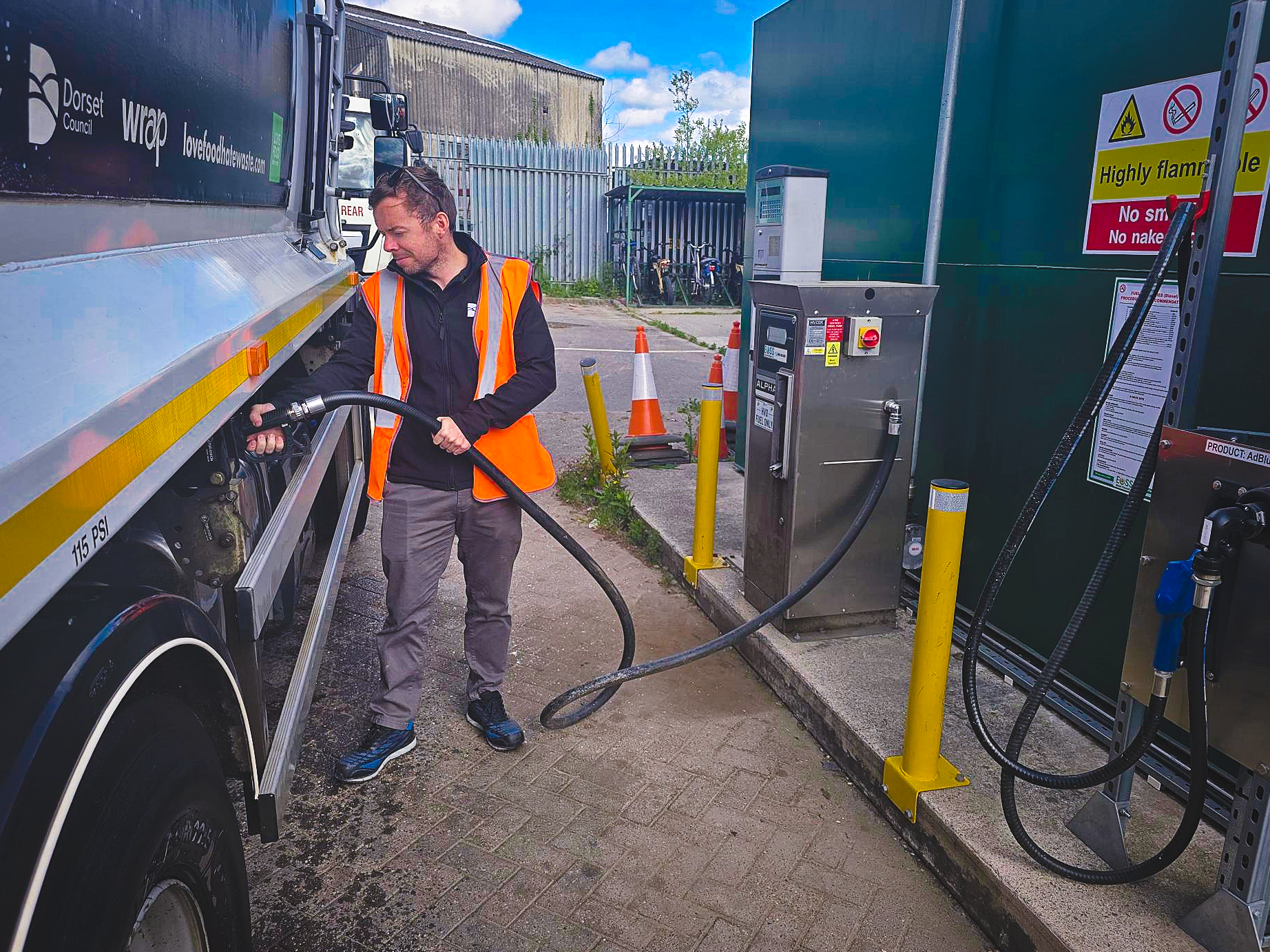Vegetable oil to help us achieve climate goals

We are taking a significant step towards reducing our carbon emissions by swapping diesel in some of our big vehicles for hydrotreated vegetable oil (HVO).
This initiative is a crucial part of our strategy to meet our ambitious carbon reduction targets.
By this summer, 75 per cent of our non-electric vehicles will be running on HVO, a cleaner alternative to diesel that can reduce carbon emissions by up to 90 per cent.
HVO emits fewer pollutants, making it a vital component in Dorset Council's efforts to improve air quality and reduce environmental impact.
The transition to HVO will make a significant contribution to our carbon reduction targets, the first of which is a 40% reduction in emissions this year (2025).
HVO is made from recycled vegetable oils, animal fats and waste oils that would otherwise be disposed of, ensuring sustainability and reducing reliance on fossil fuels.
Importantly, our contractors have confirmed that the HVO supplied to Dorset Council contains no palm oil.
Cllr Nick Ireland, Leader of Dorset Council, said: “Switching to HVO is a significant milestone in our journey towards reducing carbon emissions. This initiative has not only enabled us to meet our interim target of a 40% reduction, but also supports our long-term goal of achieving net zero carbon emissions by 2035.
“By using HVO, we are taking immediate action to lower our carbon footprint while we continue to transition to zero and ultra-low emission vehicles. This is a practical and impactful step towards a more sustainable future for Dorset. It is critical that the council keeps showing leadership in this area, and outside of our own emissions we will continue to work with partners and communities across Dorset to deliver strong environmental, climate, economic and social benefits”
The vehicles that will switch over include highways lorries, 3.5-tonne tippers, vans and waste and recycling vehicles. This initiative will complement our fleet of electric vans, with over 500 diesel vehicles set to change to HVO in the coming months.
The transition to HVO is straightforward, involving the cleaning of existing diesel tanks to accommodate the new fuel. Unlike some councils that blend HVO with diesel, Dorset Council will be using pure HVO.
Cllr Jon Andrews, Cabinet Member for Place Services, said: “Our long-term goal is to swap all our fleet to zero or ultra-low emission vehicles. But, while we wait for technology to catch up, HVO is a great way to reduce emissions.
“The changeover is easy to do without impact on our highways operations. It allows us to switch back to diesel if any issues arise.
“HVO will serve as a transitional fuel for our fleet. As vehicles are replaced, the fleet will gradually shift to zero and ultra-low emissions vehicles, such as electric.”
There is a small upfront cost for changing filters and flushing tanks, but the switch to HVO should not cause any ongoing additional maintenance costs or negatively impact vehicle performance. This will be monitored as the trial progresses.
We trialled HVO on some of our highways vehicles last summer, and since the autumn our waste depot at Ferndown has been operating its vehicles on HVO. Other depots, including Shaftesbury, Bridport, Poundbury, Wareham, Charminster, Blandford, and Gibbs Marsh, will follow suit in the next couple of months.
The remainder of our non-electric vehicles, mainly older models, are unable to run on HVO and will continue to use diesel.
HVO is biodegradable and less toxic than regular diesel. It can be stored for up to 10 years, compared to diesel’s one-year storage capability, reducing the cost and environmental impact of waste.
The council is working towards net zero carbon emissions for its directly controlled emissions by 2035. These are emissions from fuel and electricity use from/by its own buildings, vehicles and streetlights.
Find out how we are reducing the carbon footprint of our buildings and operations

Comments
1 Comment